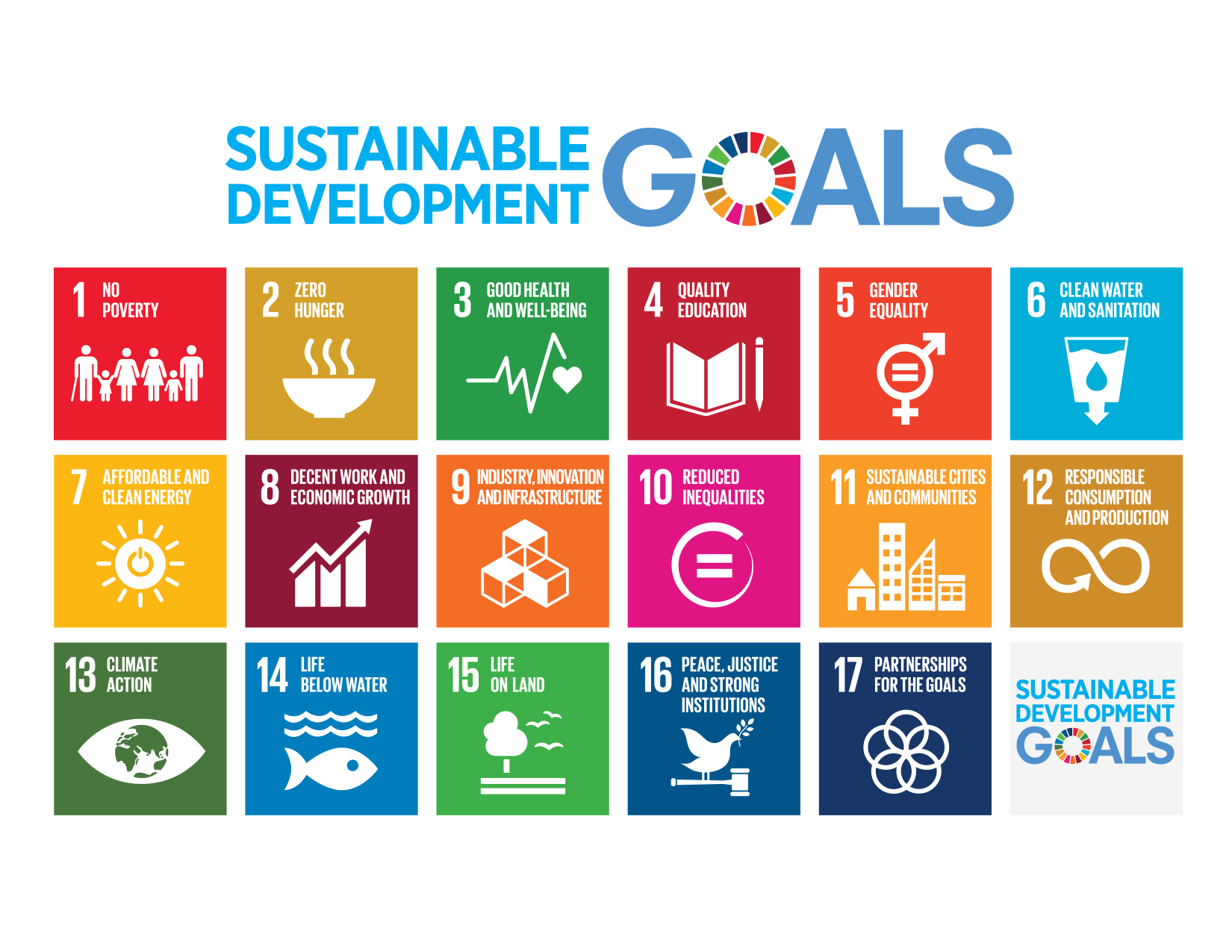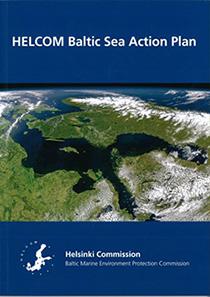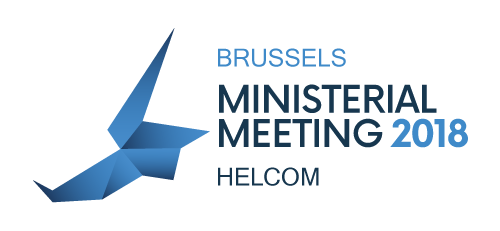2018 Brussels
The 2018 HELCOM Ministerial Meeting, held on 6 March in Brussels under the EU chairmanship, is a response to the call for action in the Baltic Sea on the United Nations Agenda 2030 for Sustainable Development.
Setting an ambitious path towards achieving a healthy marine environment, the Ministers of the Environment from the Baltic Sea countries and the EU Commissioner for Environment meet to focus on the following issues:
1. Taking new action to meet the Sustainable Development Goals in the Baltic Sea
The countries around the Baltic Sea have agreed to use HELCOM as the regional arena for coordinating work on those SDGs that relate to marine and water issues.
The Meeting follows up on the United Nations Ocean Conference in New York in June 2017, where HELCOM made several voluntary commitments towards SDG 14 – “Conserve and sustainably use the oceans, seas and marine resources”.

2. Strengthening implementation of the Baltic Sea Action Plan by 2021 as a top priority
The Baltic Sea Action Plan, aiming for a healthy Baltic Sea by 2021, rests on actions aimed at eutrophication, hazardous substances, biodiversity, and maritime activities. HELCOM’s evaluation of how BSAP actions have been fulfilled, along with assessments of the state of the marine environment, shows that while much has been accomplished, the efforts so far have not led to the recovery of the Baltic Sea, in spite of some positive signals.
Recognizing that stronger follow-through on the BSAP is needed in order to fulfil the Agenda 2030 in the region, the Meeting calls for intensified efforts to reach the common goals.
3. Adjusting the Baltic Sea Action Plan based on new knowledge and future challenges
As scientific knowledge advances, and as new issues emerge, the BSAP is adjusted to reflect the changing situation and to meet the relevant Sustainable Development Goals.
Supported by the latest information, the Meeting sets out next steps to focus on those issues that are most widely distributed and cause the greatest harm, along with climate change and other issues that will develop in the future.
The Ministerial Meeting gathers together several threads of HELCOM work in the past few years, tying them into an overall vision for how to focus the efforts for a healthy Baltic Sea in the years to come.
Global goals

In September 2015, the United Nations adopted its Agenda 2030, aiming to promote prosperity while protecting the planet. One of the 17 Sustainable Development Goals of the Agenda is goal 14 – “Life below water”, which overlaps with the goals of HELCOM’s own Baltic Sea Action Plan in many ways.
The countries around the Baltic Sea have agreed to use HELCOM as the regional arena for coordinating actions towards those SDGs that relate to marine and water issues.
HELCOM started its work on the SDGs by mapping how its activities contribute to goal 14, as well as other goals such as sustainable agriculture and water quality, in the recent publication Measuring progress for the same targets in the Baltic Sea (PDF, 3 MB). At the 2017 Ocean Conference in New York, HELCOM made three voluntary commitments in order to speed up work on goal 14, in addition to the voluntary commitments made by the individual HELCOM countries.
For the Ministerial Meeting 2018, the focus is on what needs to be done in order to reach the goals: what efforts need to be prioritized, and how should the current action plan be adjusted?
Baltic Sea Action Plan and State of the Baltic Sea


The HELCOM Baltic Sea Action Plan (BSAP) is an ambitious programme to restore the good ecological status of the Baltic marine environment by 2021. It was adopted by all the Baltic coastal states and the EU in 2007, and it provides a concrete basis for HELCOM work.
In order to follow up on whether the goals of the BSAP are reached, HELCOM makes assessments of the marine environment. According to the latest major ‘State of the Baltic Sea’ assessment, much has been accomplished, and there are some encouraging signals in the ecosystem, but the efforts so far have not led to the recovery of the Baltic Sea. The Ministerial Meeting will discuss how to achieve stronger follow-through on the BSAP in order to reach the common goals, as well as how to adjust the BSAP in the light of new information on what issues are most important and what challenges are expected to arise in the future.
During the end of 2018, HELCOM has invited organizations that are active in the whole Baltic Sea area to give feedback on the State of the Baltic Sea report and comment on how they are able to use the results. Some of these results may also be relevant for the preparations ahead of the Ministerial Meeting.
BONUS projects

Feeding into the preparations for the Ministerial Meeting are a number of projects funded by the BONUS programme – Baltic Organisations’ Network for Funding Science. Focusing on subjects like climate change, nutrients, biodiversity, and social and economic analysis, these projects produce scientific, reliable knowledge that HELCOM can use both to support its work and to identify what additional knowledge is needed.
The cooperation with BONUS aids the policy-making and the practical work done towards the goals of the BSAP, as well as the upcoming adjustment of the BSAP.
For example, a general conclusion from the projects that will be completed in 2017 and 2018 is that climate change is affecting all parts of the Baltic ecosystem. The changing climate is expected to affect the genetic diversity in the Baltic Sea, how species are distributed in the region, and how resilient the ecosystem is to nutrient loading. This means that when planning measures for biodiversity and nutrient reduction, the plans need to include measures to mitigate impacts from climate change.
Process leading up to the Ministerial Meeting
In June 2017, the 52nd meeting of the HELCOM Heads of Delegation agreed on the themes for the upcoming Ministerial Meeting, based on the priorities of the EU chairmanship in HELCOM.
The drafting groups started their work during the summer. In addition, the HELCOM Secretariat started preparing a background document taking stock of how HELCOM agreements have been implemented and comparing that to the results of the State of the Baltic Sea report.
In online meetings on 26 September and 13 November, the Heads of Delegation continued preparations by discussing the draft outcome and the background documents.
A new draft of the Ministerial Meeting outcome was discussed and polished at the 53rd Heads of Delegation meeting on 12–13 December. Resulting in the final draft submitted to the Ministerial Meeting, a last round of discussions was held at the 39th HELCOM meeting on 5 March.
In June 2017, the 52nd meeting of the HELCOM Heads of Delegation agreed on the themes for the upcoming Ministerial Meeting, based on the priorities of the EU chairmanship in HELCOM.
The drafting groups started their work during the summer. In addition, the HELCOM Secretariat started preparing a background document taking stock of how HELCOM agreements have been implemented and comparing that to the results of the State of the Baltic Sea report.
In online meetings on 26 September and 13 November, the Heads of Delegation continued preparations by discussing the draft outcome and the background documents.
A new draft of the Ministerial Meeting outcome was discussed and polished at the 53rd Heads of Delegation meeting on 12–13 December. Resulting in the final draft submitted to the Ministerial Meeting, a last round of discussions was held at the 39th HELCOM meeting on 5 March.
Large versions of the photos available in HELCOM’s Ministerial Meeting 2018 Flickr album.

RENEWED EFFORTS FOR A HEALTHY BALTIC SEA
The Ministerial Meeting in Brussels, Belgium on 6 March 2018 adopted the HELCOM Brussels Ministerial Declaration (PDF). A summary of the main decisions can be found in the press release.
The responsible Ministers and the EU Commissioner met in Brussels, Belgium on 6 March 2018 to assess the progress made towards reaching a good environmental status in the Baltic Sea by 2021. Representing HELCOM Contracting Parties were:
- Mr Karmenu Vella, Commissioner for the Environment, European Commission
- Mr Esben Lunde Larsen, Minister for Environment and Food, Denmark
- Mr Siim Kiisler, Minister of the Environment, Estonia
- Mr Kimmo Tiilikainen, Minister of the Environment, Energy and Housing, Finland
- Dr Barbara Hendricks, Federal Minister for the Environment, Nature Conservation, Building and Nuclear Safety, Germany
- Mr Kęstutis Navickas, Minister of Environment, Lithuania
- Ms Karolina Skog, Minister for the Environment, Sweden
- Mr Jānis Eglīts, Vice Minister of Environmental Protection and Regional Development, Latvia
- Ms Anna Moskwa, Deputy Minister in the Ministry of Maritime Economy and Inland Navigation, Poland
- Mr Nuritdin Inamov, Director of the Department for International Cooperation and Board member of the Ministry of Natural Resources and the Environment, Russia
The meeting focused on the following issues:
- Taking new action to meet the Sustainable Development Goals in the Baltic Sea
- Strengthening implementation of the Baltic Sea Action Plan by 2021 as a top priority
- Adjusting the Baltic Sea Action Plan based on new knowledge and future challenges
Read more about
- the themes of the meeting
- the activities and processes leading up to the meeting
- contributions from HELCOM Observers
The Meeting featured an exhibition of eleven environmental cartoons created specifically for HELCOM. For a taste of what happened at the Meeting, see the photo gallery.
News and Media
Twitter hashtag: #HELCOM2018
Collected materials available on the For media page:
- HELCOM agreement reached on next steps for a healthy Baltic Sea – 6 Mar 2018
- Baltic Sea community to decide on renewed efforts for a healthy Baltic Sea – 6 Mar 2018
- HELCOM Ministerial Meeting to draw up course of action for the Baltic Sea – 1 Mar 2018
- HELCOM and BONUS tighten collaboration for the good of environmental protection action in the Baltic Sea – 15 Dec 2017
- Major Baltic Sea policies reviewed ahead of HELCOM Ministerial Meeting – 12 Dec 2017
- First version of the HELCOM ‘State of the Baltic Sea’ report is now available – 11 Jul 2017
- Upcoming State of the Baltic Sea report to be in focus in the 2018 HELCOM Ministerial Meeting – 26 June 2017

